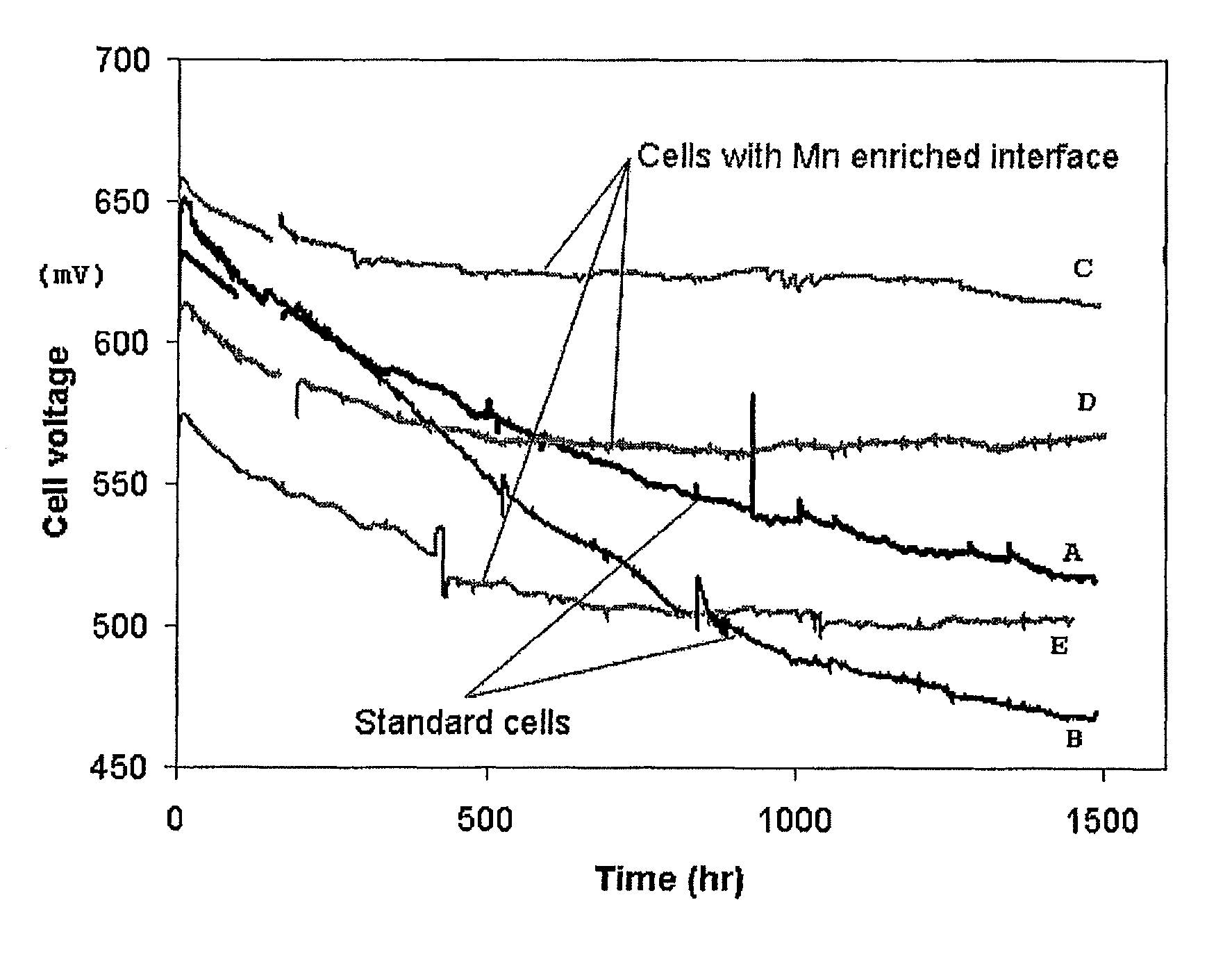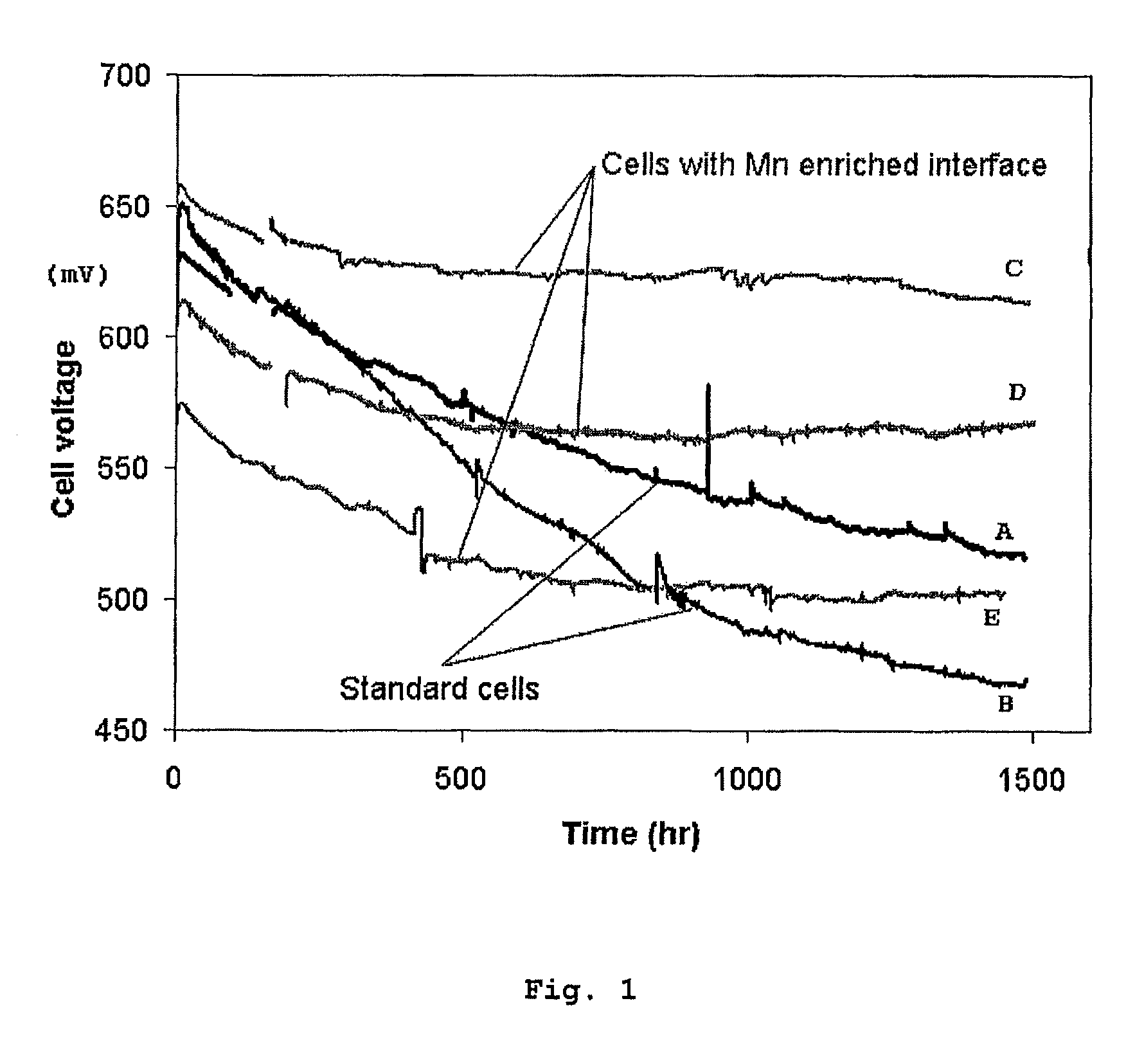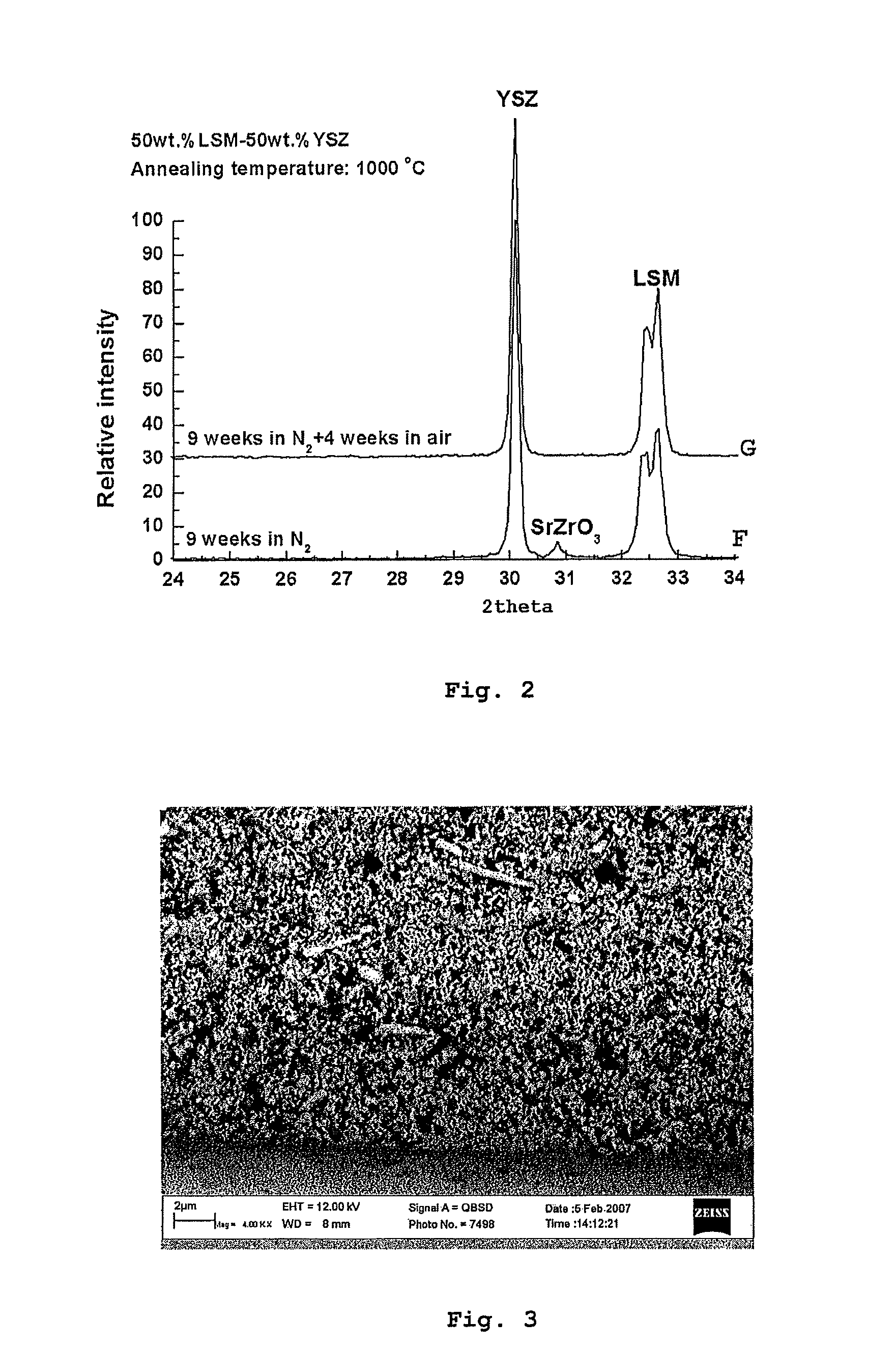Solid oxide cell and solid oxide cell stack
a solid oxide cell and stack technology, applied in the field of solid oxide fuel cells and solid oxide electrolysis cells, can solve the problems of weakening the electrical contact between cathode and electrolyte, and achieve the effect of less prone to degradation
- Summary
- Abstract
- Description
- Claims
- Application Information
AI Technical Summary
Benefits of technology
Problems solved by technology
Method used
Image
Examples
example 1
Preparation of a Solid Oxide Cell Containing Manganese in Excess Concentration
[0099]A solid oxide cell whose oxygen electrode / electrolyte interface contains Mn in excess concentration is manufactured by the following steps:
(1) tape-casting a fuel electrode support layer (AS)
(2) Spraying an fuel electrode layer (A) on the surface of the fuel electrode support layer
(3) Spraying a 10 micron electrolyte layer (E) of 8% Y2O3— stabilised zirconia (TZ8Y) on the surface of the fuel electrode layer to obtain a half cell
(4) sintering the half cell at a temperature above 1200° C.
(5) Screen printing a LSM-YSZ oxygen electrode layer of 20-30 microns in thickness on the surface of the electrolyte layer
(6) simultaneously sintering the half cell and the LSM-YSZ oxygen electrode layer deposited on the half cell
(7) impregnating the oxygen electrode layer with Mn-Nitrate aqueous solution prepared by dissolving 10 g Mn-nitrate in 100 ml distilled water. Repeating the impregnation step until a concentra...
example 2
Preparation of a Solid Oxide Cell Containing Manganese in Excess Concentration
[0103]A cell was manufactured as outlined above for Example 1, with the exception that in step 7 the impregnation was vacuum assisted.
[0104]The impregnation process was repeated at least twice to supply a concentration of 0.5-5 mg Mn / cm2 on the oxygen electrode surface to obtain a solid oxide cell.
example 3
Preparation of a Solid Oxide Cell Containing Manganese in Excess Concentration
[0105]A solid oxide cell was manufactured as outlined in Example 1 with the exception that in step 7 vacuum assisted impregnating the porous oxygen electrode layer with a Mn-Nitrate solution containing a surfactant Triton-X 100 that was made by dissolving 1 g Triton-X 100 in 100 ml Mn-Nitrate solution.
[0106]The impregnation process was repeated at least twice to supply a concentration of 0.5-5 mg Mn / cm2 on the oxygen electrode surface to the final solid oxide cell
PUM
| Property | Measurement | Unit |
|---|---|---|
| operating temperatures | aaaaa | aaaaa |
| temperatures | aaaaa | aaaaa |
| thickness | aaaaa | aaaaa |
Abstract
Description
Claims
Application Information
 Login to View More
Login to View More - R&D
- Intellectual Property
- Life Sciences
- Materials
- Tech Scout
- Unparalleled Data Quality
- Higher Quality Content
- 60% Fewer Hallucinations
Browse by: Latest US Patents, China's latest patents, Technical Efficacy Thesaurus, Application Domain, Technology Topic, Popular Technical Reports.
© 2025 PatSnap. All rights reserved.Legal|Privacy policy|Modern Slavery Act Transparency Statement|Sitemap|About US| Contact US: help@patsnap.com



